Supersense One Instant P7 Color film
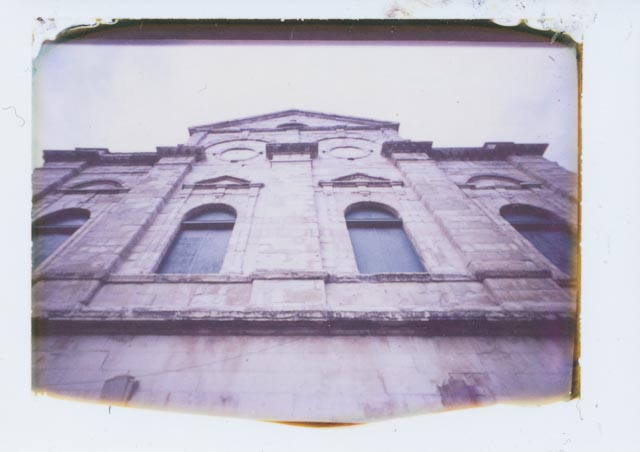 This is quite a long article… you may want to skip straight to the results!
This is quite a long article… you may want to skip straight to the results!
When Polaroid discontinued packfilm back in 2008, the hopes and dreams of instant packfilm enthusiasts were kept alive for another 8 years by Fujifilm with their FP films such as FP100c and FP3000b. Fujifilm's announcement in 2016 that they were axing their packfilm products was met with much wailing and gnashing of teeth. But what was Fujifilm to do? If a product is no longer profitable it can't go on forever!
In all honesty I was never a huge fan of Fujifilm's FP products. To me they were a little bit too modern and lacked the character of expired Polaroid films I was used to, but I too was wondering if this was the end of the useful life of my beautiful Polaroid 195 camera… and that made me very sad indeed.
If you've been following the resurgence of Polaroid over the last few years you're probably familiar with the name of Florian Kaps. It was he who, alongs with André Bosman and Marwan Saba founded Impossible Project in 2008 to buy an old Polaroid factory in the Netherlands and restart Polaroid film production. A few years later Florian Kaps withdrew from the day-to-day operations of Impossible Project to focus on a new project: Supersense. And in 2018 Supersense launched their first major product on Kickstarter: a new film for packfilm cameras called One Instant.
For anyone not familiar with packfilm, what is it? Polaroid launched packfilm (also known as Type 100 film after the product numbers of the first packfilms: 107 and 108) in 1964 as a successor to their earlier roll films. Pack film is sometimes know as peel-apart film because 15-90 seconds after you pull the film unit out of the camera (depending on the type of film you're using) you have to peel the negative material away from the positive print. If you visited many of America's biggest tourist attractions in the 1960s and 70s you would often find the place littered with these discarded negatives!
With most film types you got 10 prints per pack and the print units were packed into the film pack in a complex concertina formation so that each time you pulled a print from the camera, the tab to pull the next print out of the camera would automatically emerge.
The Supersense team found themselves in an interesting position that in many ways was the complete opposite of the position the Impossible Project team found themselves in after they had acquired their Polaroid factory. Impossible Project had all the complex machinery and plans needed to easily manufacture the packs that contain the print units: what they lacked was chemistry. They had to develop new chemistry completely from scratch! But Supersense have acquired a large amount of expired raw materials that had been intended for the manufacture of 20x24" Polaroid prints. What they lacked was any way to manufacture the incredibly complex 10 print film packs in such a way they the tab for the next print reliably appeared when the previous print had been pulled out of the camera.
They came up with an ingenious solution to this problem: they designed a completely new film pack made out of thick black sugar paper that contains just a single print. This removed the need to replicated the extremely complex way the print units were folded together in the original Polaroid 10 print packs.
As soon as Supersense announced their One Instant Kickstarter campaign in 2018 I knew I had support them, but when I finally got my six single exposure packs in 2019 it took me another 18 months to finally create some prints… my bad!! So how did it go?
One Instant issues
There are a couple of issues that you will have to contend with if you want to try out One Instant yourself:
Cost
You have to admire the shear effort that has gone into One Instant. Each and every single exposure film pack is lovingly hand made and there is evidence on the packaging of every print where you'll find a hand written mark from the person who made it. But this entirely hand made approach introduces the first problem: cost. Film packs are available in packs of three single exposure units for €30. Yes… that's €10 per print! It has to be said that these days expired Fujifilm FP100c isn't much cheaper… until recently Supersense was selling FP100c for €77 per pack, which is nearly €8 per exposure, and they recently sold out. As FP100c gets rarer it's only going to get both more expensive and less reliable. So if you want to make use of your packfilm camera you're just gonna have to accepts that it ain't gonna be cheap! Unfortunately for many (myself included) €10 per print is just too expensive for regular use.
Delicate film packs
Those sugar paper film packs are quite delicate. You really need to load them in very subdued lighting, preferably indoors. And because each film pack contains a single exposure that essentially rules out use in the field.
Mess
Supersense's film packs are a bit messier than Polaroid film packs of old… you'll have to pay particular attention to cleaning your camera's film rollers after each and every exposure.
One Instant in use
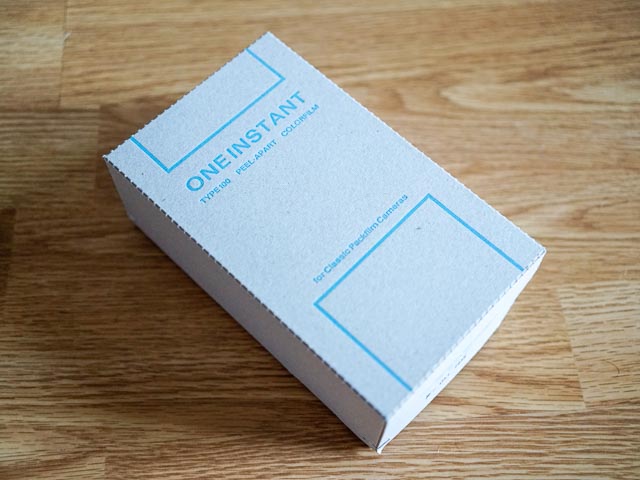 If you're prepared to buy into the Supersense craft lead aesthetic (which I am!) the Supersense packaging is a joy to behold. It's simple, effective and elegant.
If you're prepared to buy into the Supersense craft lead aesthetic (which I am!) the Supersense packaging is a joy to behold. It's simple, effective and elegant.
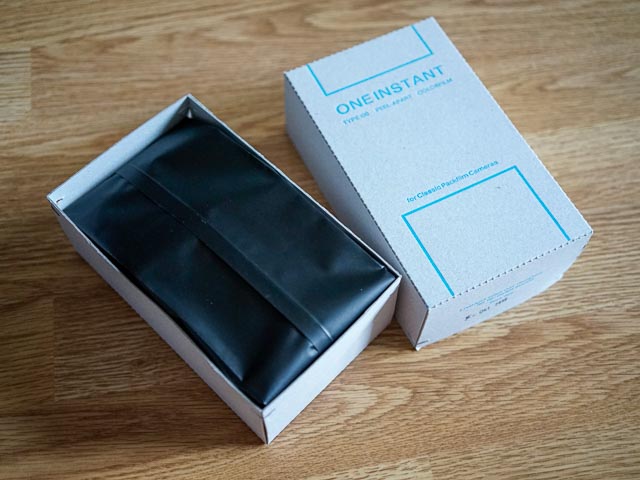 Inside the box you'll find something that's looks a bit like a coffee bag that provides a light tight enclosure for the film packs themselves.
Inside the box you'll find something that's looks a bit like a coffee bag that provides a light tight enclosure for the film packs themselves.
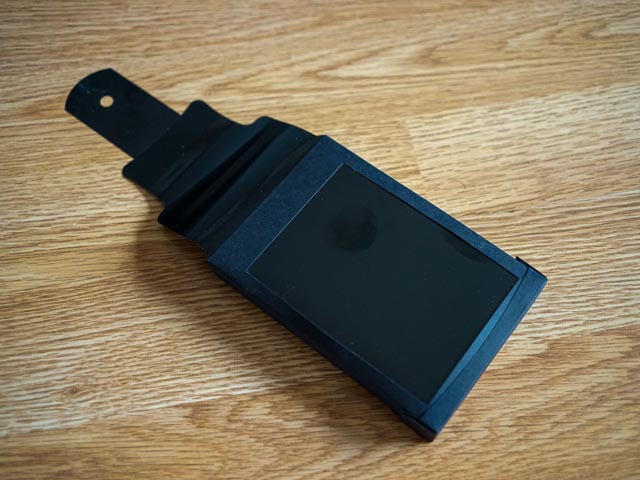 And inside the coffee bag you'll find the three single exposure film packs. These can be loaded into your camera pretty much as you used to load Polaroid or Fujifilm film packs, but you will need to manually thread the leader tab through the film rollers before cloasing your camera's back. It's simple and easy, but it's still worth watching Supersense's tutorial video before you try it for the first time.
And inside the coffee bag you'll find the three single exposure film packs. These can be loaded into your camera pretty much as you used to load Polaroid or Fujifilm film packs, but you will need to manually thread the leader tab through the film rollers before cloasing your camera's back. It's simple and easy, but it's still worth watching Supersense's tutorial video before you try it for the first time.
 Because of all the practical issues with using Supersense's rather delicate sugar paper single exposure film packs I decided to use my One Instant film in my old Daylab Jr. 35mm slide printer. This is a device from the 1980's designed to make quick Polaroid prints from 35mm slides. One Instant P7 Color film is rated at 100ISO and fortunately the Daylab Jr. has a setting designed specifically for this film spped. But the standard film speed for the Polaroid film most older Polaroid cameras are designed for in 80ISO so you may have to make use of the lighten/darken control to compensate for this.
Because of all the practical issues with using Supersense's rather delicate sugar paper single exposure film packs I decided to use my One Instant film in my old Daylab Jr. 35mm slide printer. This is a device from the 1980's designed to make quick Polaroid prints from 35mm slides. One Instant P7 Color film is rated at 100ISO and fortunately the Daylab Jr. has a setting designed specifically for this film spped. But the standard film speed for the Polaroid film most older Polaroid cameras are designed for in 80ISO so you may have to make use of the lighten/darken control to compensate for this.
Overall my experience of using the Daylab Jr. with One Instant P7 Color was extremely smooth and easy. You just have to remember to let the print develop for 3 minutes, which is considerably longer than the 60-90 seconds that is usual for most Polaroid packfilm.
Results
 |
My very first print didn't work at all, but that was entirely due to my own incompetence! I just forgot to open the dark slide on the Daylab before making my exposure… a real DOH! moment. But I was really pleased with my first proper print. It's worth bearing in mind that I was using this film 18 months after I received it, but the colours were very subdued and had a strong purplish tone. But I have to say I was very happy with this print. The 35mm slide from which I made this print was shot on a Voigtlander Bessa L fitted with a 15mm lens, hence the exaggerated wide-angle perspective. |
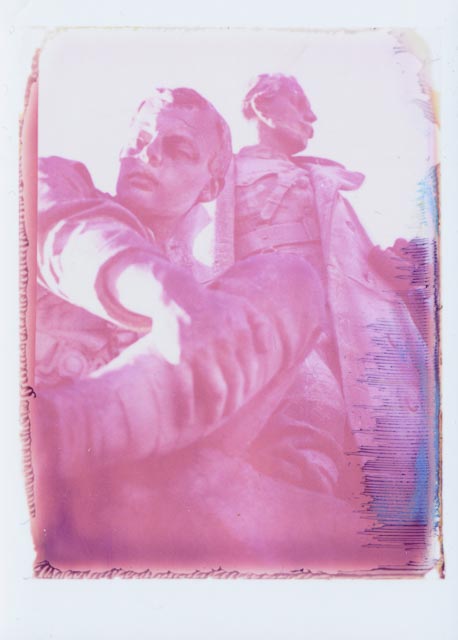 |
My second print from my first pack of three film packs has a very different colour from every other print, but there is a reason for this! I want to try creating a Image Transfer print using One Instant P7 Color. Image transfer is a very simple process that involves peeling the negative from the print after a very short time and then applying the negative to a sheet of plain watercolour paper for the rest of the development time. So this is the resulting print after just 20 seconds rather than the full 3 minute development time recommended by Supersense. |
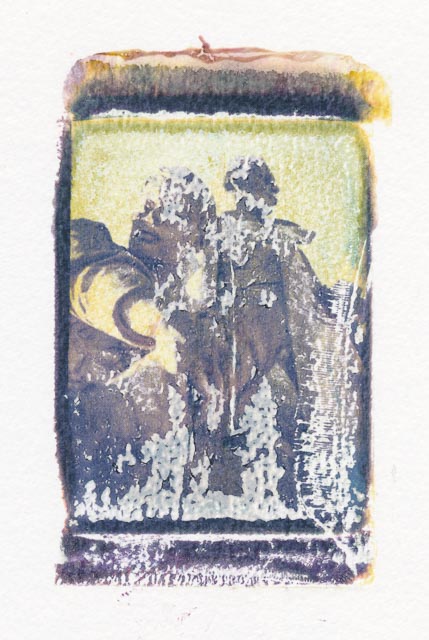 |
Any this is the resulting Image Transfer print. As you can see it didn't really work! I made this print onto dry watercolour paper and if I had had more One Instant film I would have tried making a print onto damp watercolour paper. If you're interested you can some Image Transfer prints I made using Polaroid 669 film elsewhere on this website. |
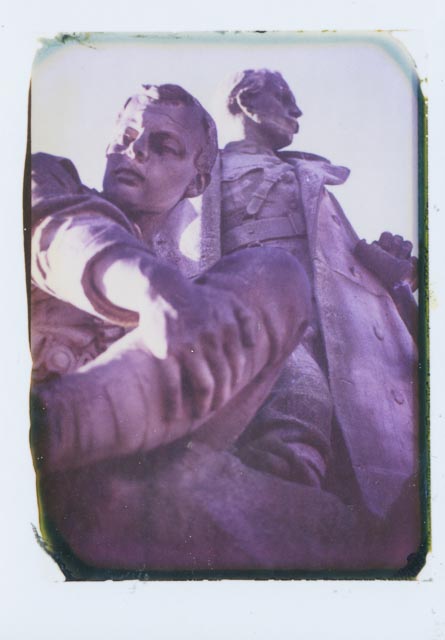 |
For my first print from my second box of three film packs I decided to make a normal print from the same 35mm slide as above. It is similar to my very first print, strong purple colour cast but still with very pleasant hints of other colours coming through. |
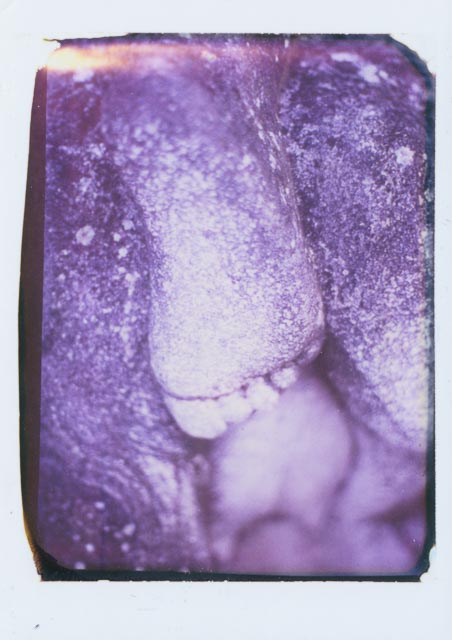 |
The second print from my second box of three film packs is pretty much a purple hued but completely monochrome image. |
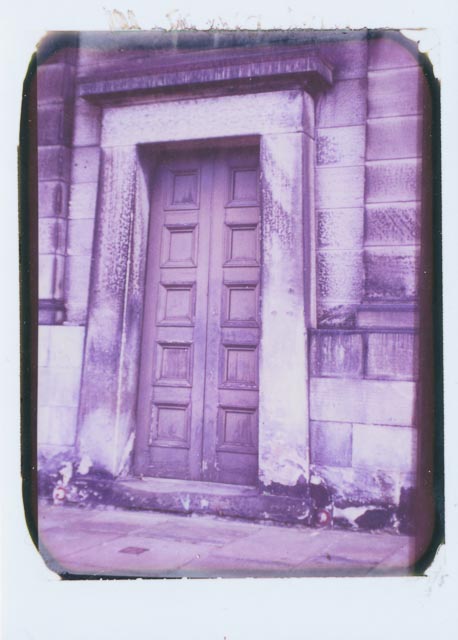 |
My last print was also a purple hued but completely monochrome image. A bit disappointing after the first few images which at least had hints of other colours coming through, but I still like the tones. |
The future
Supersense are still working through their stocks of expired P7 Polaroid chemistry, which raises a difficult question: what's going to happen when they run out? Unfortunately I suspect that when that happens packfilm will finally cease to exist as a going concern. But let's hope and pray that Florian Kaps and his team can both work out how to produce their own chemistry and also work out a way to make the film packs both cheaper and sturdier.
Conclusion
So would I recommend getting some One Instant P7 Color film? Hmm… difficult question! Any rational assessment of the value of this film would have to conclude that it is simply too expensive! But I'm not sure a rational assessment is really appropriate. If you want to give your packfilm camera (or packfilm slide printer!) some exercise there aren’t many options and they're all expensive. The results are in some ways a little disappointing (especially the last two purple monochrome print) but I'm willing to put that down to the length of time it took my to actually use my film. So ultimately I would say that if you have deep pockets, like a bit of a photographic adventure, and are truly passionate about packfilm, I think you should definitely show the Supersense team a bit of love and give them your support.